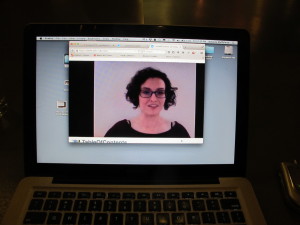Return to Theme Table of Contents
Complete text by Rachel Zimmermann, associate editor and theme editor
Throughout history artists and academics alike have been significantly concerned with the relationship between art and issues of identity. From class distinctions in the funerary arts of Han Dynasty, China (206 BCE – 220 CE) to contemporary investigations of the role advertisements and popular media play in constructing an “ideal,” female body image, one can see an explicit connection between representations and the various categories of identity—in terms of both a collective and an individual. These categories include, but are not limited to, topics such as gender, race, ethnicity, socio-economic class, and sexuality. And while we frequently discuss and list such categories as distinct from one another, it is important to recognize the intersections among them, as well as their relationship to art.
What is meant by the theme of identity politics, particularly within the context of art or visual culture, may seem self-evident (or perhaps, outdated) as a topic of critical discussion. Yet, in the latter half of the twentieth century, particularly the 1960s and
1970s, specific social movements developed in the United States to address the connections between categories of identity and systems of power, defining what we understand, today, as identity politics. These movements, included among them the Civil Rights, Anti-War,[1] Women’s Rights, and Gay Rights movements, aimed at raising awareness of the social inequalities among U.S. citizens based on one’s race, wealth, gender and/or sexuality in an attempt to alter—that is, improve—the American landscape. While time has certainly passed and cultures around
the world have undoubtedly changed, the concerns that prompted such movements over three decades ago are still significant issues of our time. Prejudices and inequities, which at their core are rooted in historical representations and language, still exist in terms of race, sexual orientation, gender, etc. As a result, it is important to understand the topic of identity politics, as well as its historical development and contemporary relevance.
For Michael Warner, both “the political critique of personal life and the identitarian critique of political life—are often described, confusingly enough, as identity politics.”[2] This dual definition of identity politics, while sometimes confusing, lends itself to broadening the discourse of visual culture and its relation to identity. As you shall see in this issue of the VASA Journal of Images and Culture (VJIC), all of the projects included explore the intersections between the personal and political, often collapsing the two and blurring the line between such categorical distinctions.
This thematic issue of the VJIC incorporates texts, portfolios, and video projects related to the broad subject of identity politics. Topics addressed include, but are not limited to: race, ethnicity, gender, sexuality, religion/faith, and mass media. The issue will be published in three installments beginning in February 2015.
[1] Referring here to the Vietnam War. It was a movement, which aimed to end the War and raise social consciousness about U.S. involvement, tactics, and the socio-economics of the nation.
[2] Michael Warner, Publics and Counterpublics (New York: Zone Books, 202), 34.





